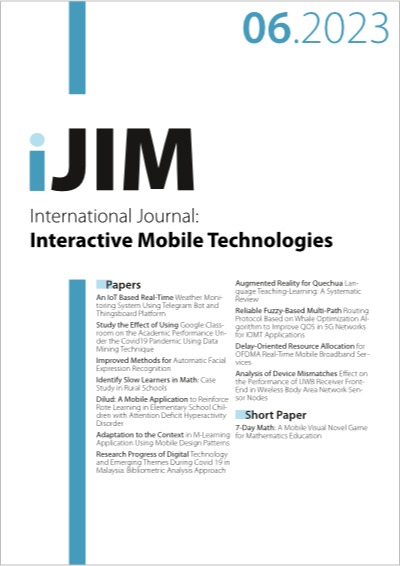Improved Methods for Automatic Facial Expression Recognition
DOI:
https://doi.org/10.3991/ijim.v17i06.37031Keywords:
Facial Expression, Machine Learning, Deep Learning, Facial Land- Marks, Convolution Neural Network [CNN]Abstract
Facial expressions constitute one of the most effective and instinctive methods that allow people to communicate their emotions and intentions. In this context, the both Machine Learning (ML) and Convolutional Neural Networks (CNNs) have been used for emotion recognition. Efficient recognition systems are required for good human-computer interaction. However, facial expression recognition is related to several methods that impact the performance of facial recognition systems. In this paper, we demonstrate a state-of-the-art of 65% accuracy on the FER2013 dataset by leveraging numerous techniques from recent research and we also proposed some new methods for improving accuracy by combining CNN architectures such as VGG-16 and Resnet-50 with auxiliary datasets such as JAFFE and CK. To predict emotions, we used a second approach based on geometric features and facial landmarks to calculate and transmit the feature vector to the SVM model. The results show that the ResNet50 model outperforms all other emotion prediction models in real time by maximizing.
Downloads
Published
How to Cite
Issue
Section
License
Copyright (c) 2023 Mohamed El Ghmary, Said ZIANI, Hassan ECHOUKAIRI, Ali OUACHA

This work is licensed under a Creative Commons Attribution 4.0 International License.



